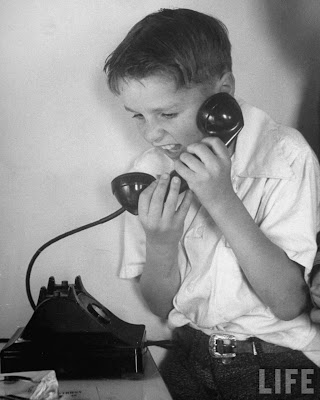 |
| The art of presentation is a defining feature for many restaurants of the better sort |
The focus of these rules (and the rules I share with you in general, Dear Reader) is to provide advice and guidance to people who would like to be thought of as courteous, mannerly, and discreet by those observing them—either for the first time, or repeatedly. In other words, to stand in stark and pleasing contrast to the tedious, loud-mouthed, ill-mannered boors one encounters with increasing frequency these days, and who are a noxious intrusion on the lives of well-behaved people who have the misfortune to be within earshot of said cretins.
While I covered the majority of my rules for dining in better restaurants in the first installment of this series, here are the remainder of the rules I was not able to cover beforehand:
10. Don't bring young children with you to dinner in a restaurant for grown-ups
While there are very few of the city's better restaurants where well-behaved children under the age of twelve are not welcomed during the day, it is not appropriate to bring them to dinner in better restaurants where the primary clientele is comprised of cocktail-imbibing grown-ups, out for the evening. If you can't bear to leave your children at home with their nanny or babysitter, then either take them to a different restaurant that is suitable for families, or stay at home with them and eat with them there.
 |
| It is best to leave small children at home when out for dinner at grown-up restaurants such as this |
Don't get me wrong, Reggie adores children, and believes that it is more than acceptable to take them out to eat in restaurants—but only to ones where it is appropriate to do so, and only when the child is old-enough, well-trained enough, and well-behaved enough to be able to handle the experience without having a meltdown or making a scene.
11. If you have a petulant or wailing child with you, either deal with it or leave the restaurant with it
Too many of us have withstood the misery of sitting in a restaurant where a parent (or parents) of children allow their little darlings to kick up an unsupervised ruckus. This is not acceptable. If your child is misbehaving in a restaurant (or any other public place for that matter), then it is your responsibility to either quiet it down or take it outside with you if you cannot.
12. Refrain from speaking on cellphones
Don't make calls from or answer your cellphone when sitting at a table in a restaurant. It is rude to your table-mates, and irritating to those sitting nearby who are not interested in listening to you make plans or discuss your personal life with someone on the other end of the line. If you feel you absolutely must use your cellphone, then excuse yourself from the table and go someplace else where you will not disturb anyone.
13. Be discreet when texting or emailing
While Reggie believes one should refrain from using PDAs to check email or for texting while sitting at a table in a restaurant, sometimes it is unavoidable. Under such circumstances, however, he advises that you hold the device on your lap under the edge of the table and out of view, so that others around you aren't made glaringly aware of it.
In closing, I offer you a quote from the website of La Grenouille, one of New York's very best restaurants, and a place where I have been most fortunate to have dined with pleasure numerous times over the years. In fact, I reviewed it earlier, here.
"Out of consideration for your fellow diners we ask you to refrain from using cell phones or other devices, and that children under 12 be left in the care of a loving babysitter."I couldn't have said it any better myself.
Photographs courtesy of LIFE Images
























































































